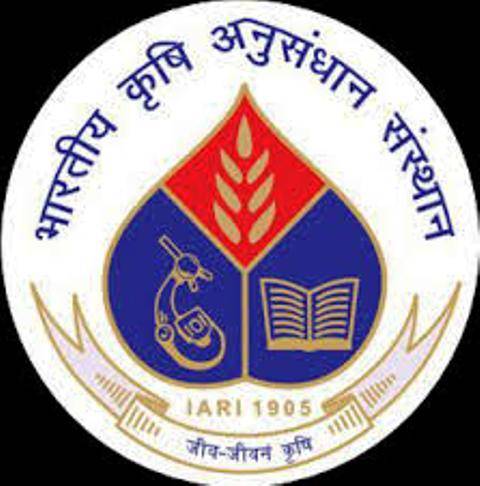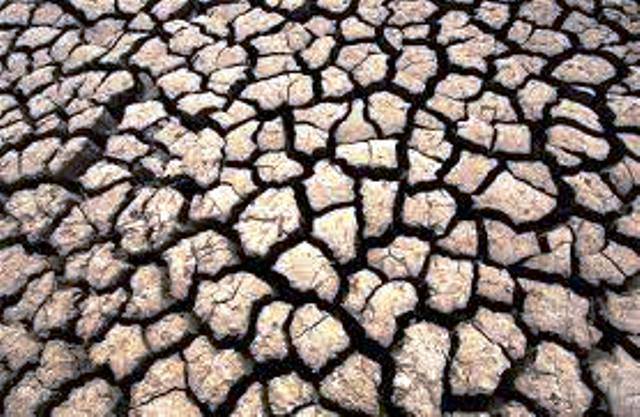
The reduced supply of precipitation (and subsequently soil moisture) for crops leads to an agricultural drought that impacts crop yield, inflicting enormous economic impacts on developed countries and the suffering of millions of people in less-developed regions of the world.
Drought is an extreme condition when water in one or a combination of water stores (e.g., river, lake, reservoir, snowpack, soil water or groundwater) or water fluxes (precipitation, evapotranspiration or runoff) drops below a defined condition for a prolonged period of time. Such a water deficit evolves over weeks to months and can last for months and years. Drought's propagation is silent and often without warning until it impacts human lives and environmental activities. Drought conditions are related to water demand, so local water use plays a central role in defining conditions of scarcity and the resulting impacts. Classified drought into meteorological, agricultural or hydrological, depending on whether the deficit is measured using precipitation, soil moisture or river discharge, respectively.
In the US, since 1996, there has been at least one drought every year except for the years 1997, 2001, 2004 and 2010, and each year drought cost between USD 1 billion and 14 billion in damages (in 2015 – adjusted dollars). In California alone, the 2015 drought was estimated to cause USD 2–5 billion in damages to the agricultural sector.
Scientifically based drought-monitoring tools and warning systems assist in the mitigation of the losses caused by droughts and the planning and management of water shortages that will accompany future droughts. Such drought-monitoring tools are based on long-term observations of the hydrological variables such as precipitation, streamflow, soil moisture and groundwater.

Although the impacts of drought are intimately linked to the vulnerability of a population to adverse conditions and how society responds within the constraints of changing economies, the timely determination of the current level of agricultural drought aids the decision-making process in order to reduce its impacts. Scientifically based drought-monitoring tools and warning systems assist in the mitigation of the losses caused by droughts and the planning and management of water shortages that will accompany future droughts. Such drought-monitoring tools are based on long-term observations of the hydrological variables such as precipitation, streamflow, soil moisture and groundwater.
Pluvial conditions are related to an abundance of precipitation and subsequently wet soil conditions that can adversely affect agriculture by waterlogging the fields or exacerbating flooding from additional rainfall. Thus, for monitoring extremes (either agricultural drought or pluvial conditions), realistic estimation of soil moisture at regional to continental scales is required. Soil moisture is the central source of information, since it reflects recent precipitation and antecedent soil conditions. In a sense, soil moisture captures the aggregate balance of all hydrological processes and represents available water, being a buffer between incoming precipitation and throughfall and evapotranspiration and drainage processes.
Seeking above problems, a workshop was organised by I.A.R.I. - "Bilateral Workshop on Building an Operational Composite Drought Monitoring Index for India (Jan 22 - 23, 2019). The workshop was held at ICAR Lecture Hall (2nd Floor), NASC Complex, Dev Prakash Shastri Marg, Pusa, New Delhi.
Jan 22, 2019 (Day 1)
-
Inaugural Session 11.00 – 11.30 am:
-
Technical Session-1 CDI Background and Overview (11:30 – 12.00 pm)
-
New Tool Opportunities in Remote Sensing (12.00 pm – 12.30 pm)
-
Using CDI in the MENA region (12.30 pm- 1.00 pm)
-
00 – 02.15 pm: Lunch 02.30– 04.30 pm: Technical Session-2 Indian Drought Monitoring Protocol
-
CDI validation on Maharashtra
-
CDI validation on Karnataka
-
Remote sensing based ET estimation
Jan. 23, 2019 (Day 2)
-
Stakeholder Engagement and Interactions (10.00 am- 11.30 am)
-
Tea Break (11.30 am – 12.00 pm)
-
Way Forward and Next Steps (12.00 pm – 1.00 pm)
-
Lunch Break (1.15 pm – 2.15 pm)
Organizers:
Water Technology Centre, ICAR-Indian Agricultural Research Institute, New Delhi, India Daugherty Water for Food Global Institute National Drought Mitigation Center, School of Natural Resources University of Nebraska, USA
















